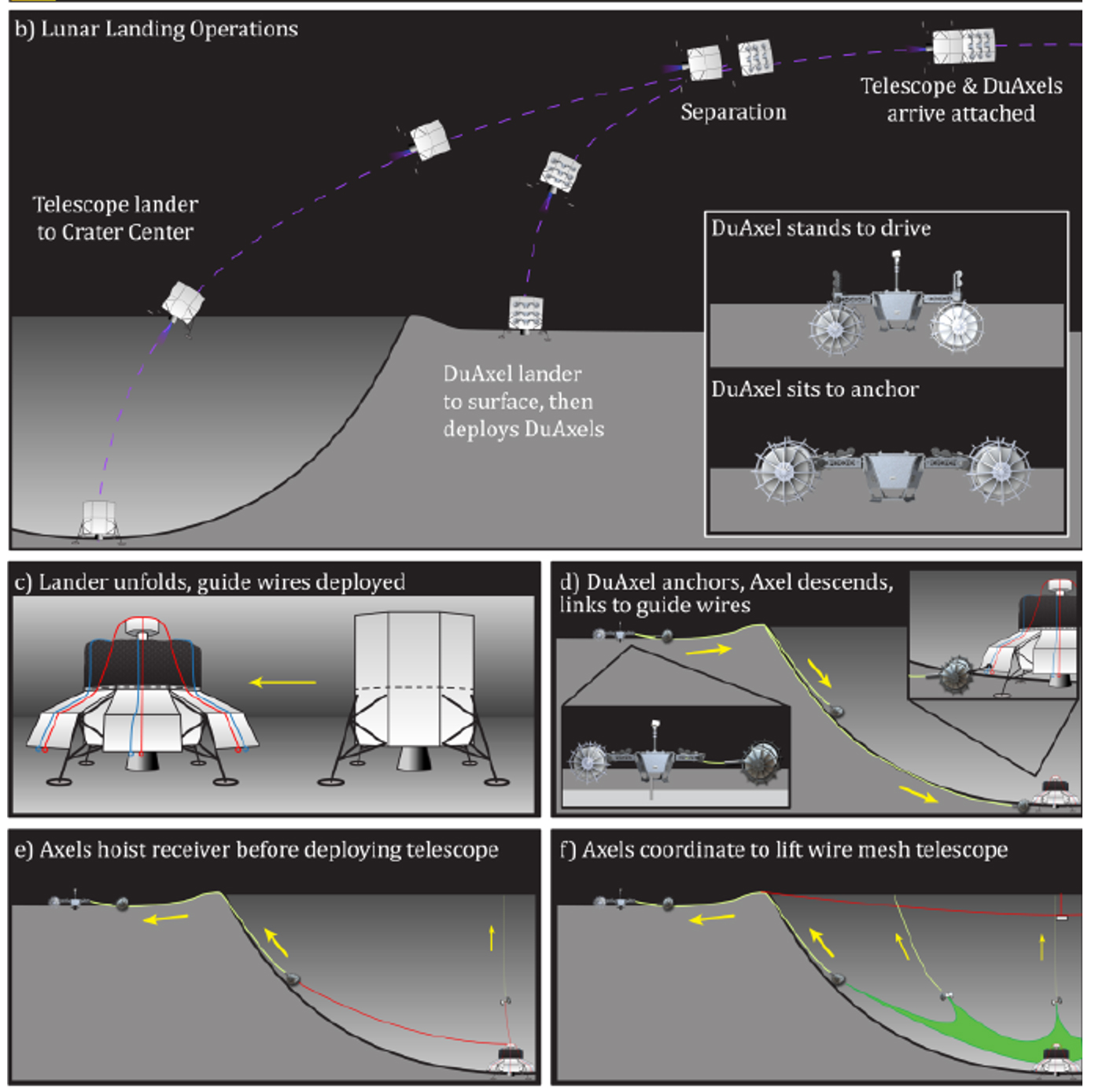The far side of the Moon is a land of quiet mystery. Because it always faces away from Earth, all the noisy radio transmissions that we humans blast out never reach this part of the Moon.
Scientists have dreamed of capitalizing on this unique radio silence for decades, and NASA has now brought that vision one step closer to reality by funding a proposal to build a radio telescope inside a crater on the far side of the Moon.
The proposed observatory would be one kilometer in diameter, making it “the largest filled-aperture radio telescope in the solar system,” according to a NASA abstract about the concept.
Called the Lunar Crater Radio Telescope (LCRT), the proposal is the brainchild of Saptarshi Bandyopadhyay, a robotics technologist at NASA’s Jet Propulsion Laboratory. On Tuesday, LCRT was selected for initial “Phase 1” funding ($125,000) by NASA Innovative Advanced Concepts (NIAC) program, which aims to explore advanced, far-future technologies.
LCRT is still in “very early stages of development,” said Bandyopadhyay in an email, noting that “the objective of Phase 1 is to study the feasibility of the LCRT concept.”
“[W]e will mostly be focusing on the mechanical design of LCRT, searching for suitable craters on the Moon, and comparing the performance of LCRT against other ideas that have been proposed in the literature,” he added.
Bandyopadhyay envisions building the LCRT in a crater that measures about three to five kilometers (two to three miles) in diameter. The telescope’s wire-mesh scaffolding could be delivered and erected by wall-climbing robots, such as NASA’s DuAxel rovers, which would be capable of scaling the vertical slopes of the crater.

The LCRT would be a filled-aperture radio telescope, or spherical reflector, meaning that it uses one full dish to collect radio data, as opposed to radio arrays that are made of many networked dishes.
Currently, the largest filled-aperture telescope ever built is the Five-hundred-meter Aperture Spherical radio Telescope (FAST) in Southwest China. LCRT would be twice as big as FAST, and would have a much more conducive environment for radio astronomy.
Not only would this telescope avoid all the radio interference produced by humans, it would also be observing the universe without the veil of an atmosphere. Earth’s atmosphere is quite useful for keeping us all alive, but it also blocks many wavelengths of light from reaching ground-based observatories, including low-frequency wavelengths that exceed 10 meters.
“An ultra-long-wavelength radio telescope on the far side of the Moon has tremendous advantages compared to Earth-based and Earth-orbiting telescopes,” Bandyopadhyay said in his proposal abstract.
“LCRT could enable tremendous scientific discoveries in the field of cosmology by observing the early universe in the 10–50m wavelength band (i.e., 6–30MHz frequency band), which has not been explored by humans to date.”
In particular, the telescope could shed new light on the mysterious processes that occurred more than 13 billion years ago, as the first stars in the universe were being born, according to a 2018 paper led by Bandyopadhyay. It could also examine fine details about exoplanets that orbit other stars.
While these science goals are extremely exciting, Bandyopadhyay also looks forward to the engineering challenges inherent to such an ambitious concept. “As a roboticist, I am personally most interested in enabling such science measurements using the best robotics technologies available to us!” he said.
In addition to LCRT, NASA granted initial funding to more than a dozen other futuristic missions this week, including swarms of “gravity hoppers” that could explore small celestial bodies and an antimatter braking system for interstellar travel.
from VICE https://ift.tt/2Rpus8s
via cheap web hosting
No comments:
Post a Comment